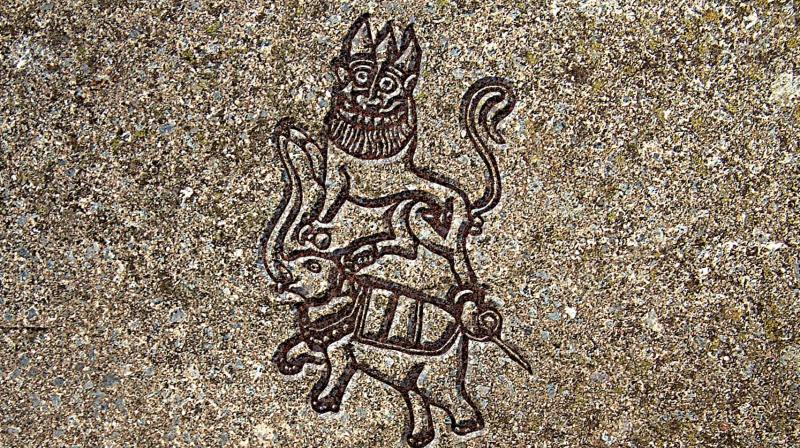Unit 1
Unit 1
a. Towards Empire, Origins of Mauryan Rule: Chandragupta Maurya, EmperorAsoka: Kalinga war, Spread of Buddhism, Policy of Dhamma, Rock Edicts and Script.
b. Mauryan Economy: Administrative Organisation,
Mauryan Art: Stupas
c. Disintegration of the Mauryan Empire.
Unit 2
a. Post Mauryan Developments :Greek, Saka and Kushan Invasion and Significance of Contacts between Central Asia and North India.
b. State formation in the Deccan: Satavahanas Political, Religious,
Economic and Cultural Developments.
c. Sangam Age : Chiefdoms , Society, Literature, Indo- Roman Trade.
Unit 3
a. Rise of Guptas :Origin of Guptas : Samudragupta, Chandragupta –II and Others
b. Society, Religion and Economy, Administration under the Guptas
c. Art, Architecture, Sculpture, Painting and Literature, Science and
Technology.
Unit 4
a. Vakatakas: Cultural contributions , Disintegration of Gupta Empire
b. Post - Gupta Developments, Huna Invasions , Institutions: Social Stratification and Slavery
c. Status of Women: Family, Marriage and Property Rights, Educational Ideas and Institutions
- Teacher: Dr. Rashmi Band
History of India up TO 300 B.C.
Unit 1
a. Stone Age Cultures: Tools, Sites and Subsistence Pattern.
b. Paleolithic Culture, Mesolithic Culture
c. Neolithic Culture, Bronze Age.
Unit 2
a. First Urbanization: The Harappan civilization: Major sites,
Mohenjodaro, Kalibangan, Lothal and Dholvira
b. Town Planning, Social Life, Religious Life and Economy
c. Dabate on Harappan Chronology and Ethnic Identities
Unit 3
a. Vedic Culture: Early Vedic Age, Polity, Society, Economy and Religion. Later Vedic Age: Polity, Society, Economy and Religion
b. Janapadas andMahajanpadas. Territorial States: Monarchical and Republican
c. Second Urbanization: Urban Centers. Emergence of New Classes
Unit 4
a. Religious Movements: Jainism and Buddhism, Ajivikas
b. Philosophy: Upnishadas and Bhagwat Geeta,
c. Six Schools of Thought
- Teacher: Dr. Rashmi Band
History of Tribal Art and Literature
Unit 1 Origin and Historicity
a. Oral and Literary Sources of Tribal Art
b. Nature and Meaning of Tribal Art
c. Folk Art
Unit 2 Indian Tribal Art:Form and Types
a. Rock Art, Bhimbetaka, Art of Pachamari, Vindhya
Mountain Range
b. Sculpture, Wall Painting, Varali, Madhubani, Gondi and Bhil
c. Gender and Art
Unit 3 Tribal Literature
a. Development of Literary Texts: Language and Folklore
b. Social Transformation through Literature and Oral tradition
c. Conservation of Culture and Identity
Unit 4 Museum and Tribal Research Institutes
a. Documentation and Conservation.
b. Tribal Cultural Research and Training Institutes
c. Tribes as projected in Museum
- Teacher: Dr. Naresh Madavi
The course start with the origin of the first world war and covers all important events aftermath till end of the Second World War. It has covered the Russian revolution, Chinese revolution and Palestine Problem, Establishment of Israel.
- Teacher: Dr. Santosh Suradkar
Unit 1
a. Formation and Administration of Central Provinces and Berar
b. Sarvajanik Sabha, Gorakshan Sabha, Educational Institutions
c. Congress Sessions – 1891,1897,1920
Unit 2
a. Non Cooperation Movement, Civil Disobedience Movement
b. Quit India Movement –Ashti, Chimur, Yawli
c. First Congress Ministry under Dr. N.B.Khare
Unit 3
a.
Separate Vidarbha
Movement
b. Dalit Movement
c. Samyukta Maharashtra Movement
Unit 4
a. Social Welfare Activities—Missionary Work, Matru Seva Sangh, Anandvan, Gurudev Seva Mandal
b. Rashtriya Swayam Sevak Sangh
c. Dhamma Chakra Pravartan
- Teacher: Dr. Naresh Madavi
Unit 1
a. Emergence of Gond Power
b. Gond Dynasty of Chandrapur- Bhim Ballal Shah, Suraj Ballal Shah
c. Gond Dynasty of Devgad- Jatba, Bakht Buland
Unit 2
a. Establishment of Bhosle Rule - Raghuji I
b. Raghuji I -Bengal Expeditions
c. Janoji—Relations with the Peshwa, Nizam
Unit 3
a. Mudhoji - Relations with the Peshwa,Nizam and the English
b. Raghuji II - Relations with the English
c. Appa Saheb Bhosle - War with the English
Unit 4
a. Accession of Raghuji III
b. Annexation of Nagpur
c. Nagpur during the revolt of 1857

- Teacher: Dr. Naresh Madavi
Unit 1
a. Revolt of 1857-Nature, Causes and Effects
b. Queen’s Proclamation, Act of 1858
c. Indian Council Acts- 1861,1892
Unit 2
a. Arya Samaj
b. Satya Shodhak Samaj
c. Ramkrishna Mission
Unit 3
a. Emergence of Indian Nationalism
b. Foundation of Indian National Congress
c. Objectives and programmes of the Congress
Unit 4
a. Ideology of the Moderates :Dadabhai Nouroji & Gopalkrushna Gokhale
b. Rise of Extremist Leadership
c. Partition of Bengal
- Teacher: Dr. Naresh Madavi
Semester I
Paper II B. India Under Company’s Rule: 1757-1856
Unit 1
a. India in the mid-18th Century
b. Battles of Plassey and Buxar
c. Anglo – Maratha Wars, Anglo – Sikh Wars
Unit 2
a. Subsidiary Alliance System
b. Policy of Annexation of Indian States
c. Doctrine of Lapse
Unit 3
a. Regulating Act of 1773
b. Pitt’s India Act of 1784
c. Charter Acts 1813, 1833, 1853.
Unit 4
a. Introduction of Western Education
b. Raja Ram Mohan Roy, Brahmo Samaj
c. Development of English and Vernacular Press

- Teacher: Dr. Naresh Madavi
